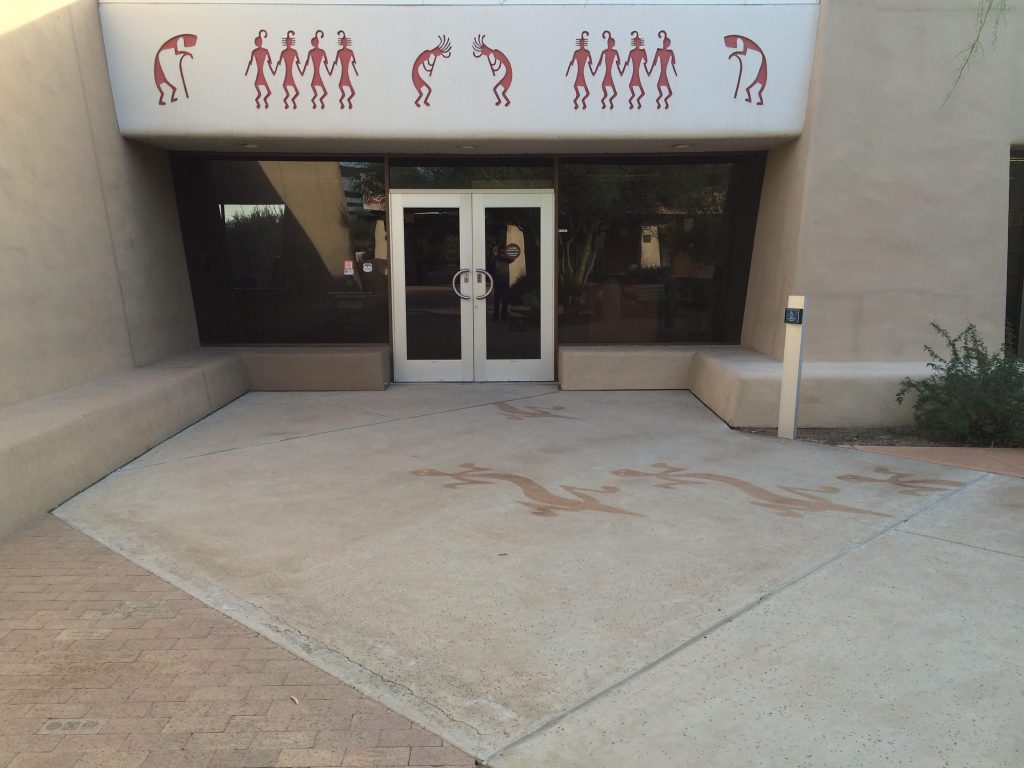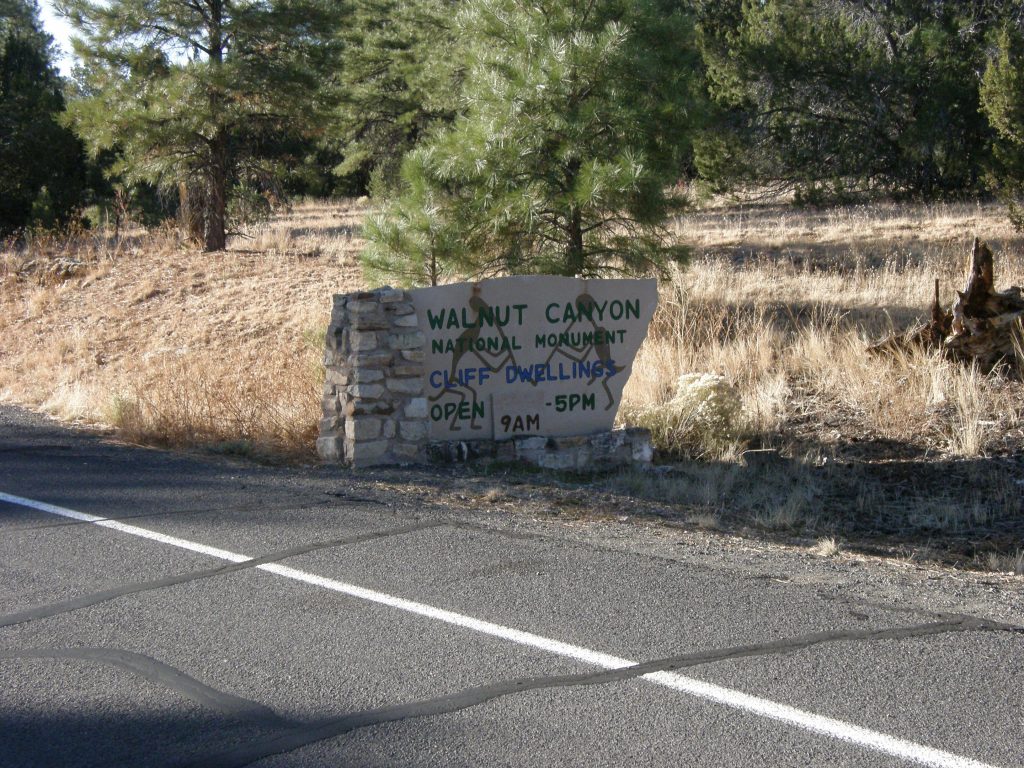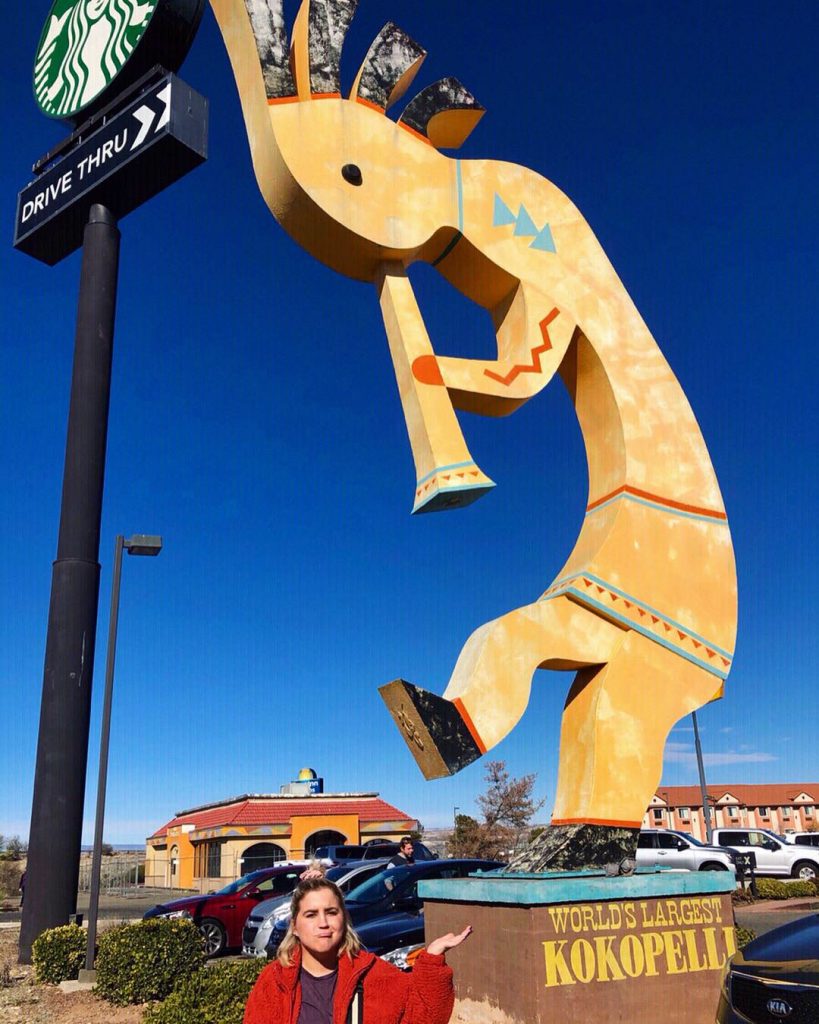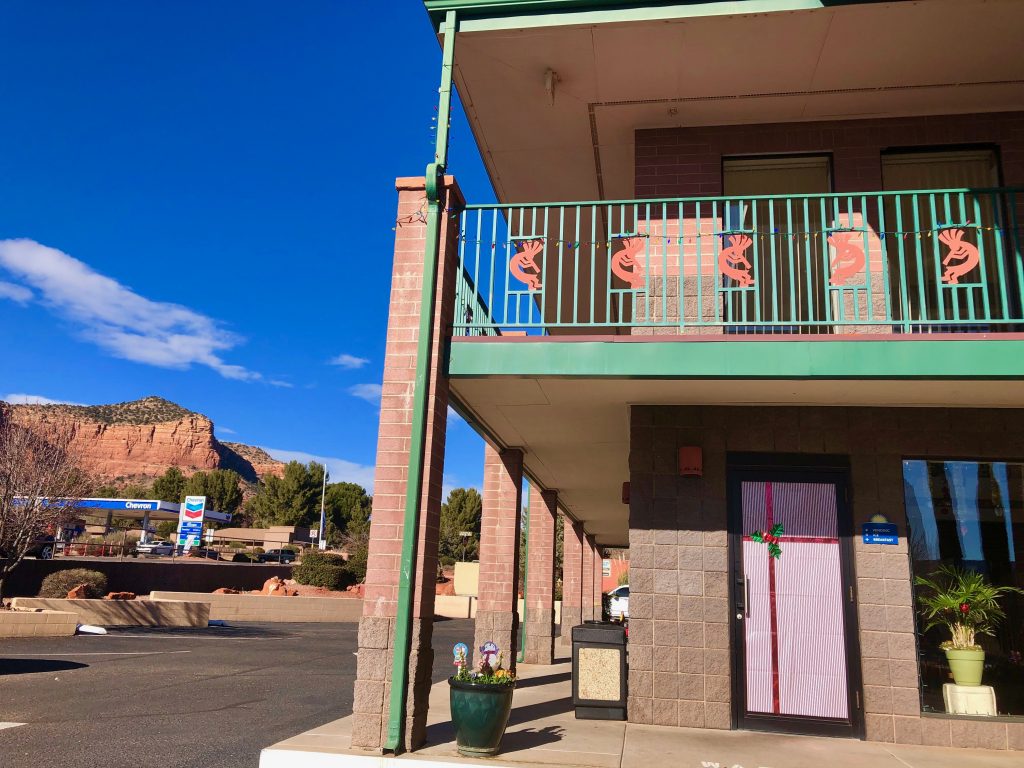Although it is definitely possible to find the Kokopelli being used by publicly-funded institutions, I have found in my research that the vast majority of Kokopellis you may stumble upon are from privately-funded businesses, individual artists, or stand-alone websites. Chances are, you’re more likely to find Kokopellis in a privately run gift shop or online store than in a government-funded entity. That said, as demonstrated on the “A Tool for Native Institutions” page, there are complex dynamics involved with public usages of the Kokopelli symbol as well.
I originally structured my research as a compare/contrast of how the Kokopelli is used by public and private institutions throughout the Southwest. Learning that there is so much more to the Kokopelli story than a simple public v. private binary, I decided to extend beyond this framework, while still using the findings I uncovered in light of the complexities of the “appropriation” of the Kokopelli symbol.
One such discovery is that the usages of the Kokopelli by private and public entities differ in how they recognize the symbol. For the most part, it appears as though public usages of the Kokopelli largely attempt to acknowledge the Native roots of the symbol, while private businesses who use it generally make no such effort.
“Public” Usages
One example of this on the public side is the popular Kokopelli’s Trail running from Loma, Colorado, to Moab, Utah. As a 142-mile trail both funded and promoted by the Department of the Interior’s Bureau of Land Management, Kokopelli’s Trail has become a prominent destination for both the Southwest region and the cycling community. Although the trail is publicly-funded by the federal government, upon its inauguration, it was blessed by members of the Hopi Nation who traveled to the site and offered a ceremony in traditional dress.1 Evidently, those in charge of adopting the name “Kokopelli” attempted to acknowledge its Hopi roots and involve the community.
Source: Google Images
*NOTE: The extent to which the Hopi Nation was involved in the approval process remains unclear, as does whether or not they benefit at all from the utilization of the Kokopelli name. It is also uncertain whether the naming decision came before or after the decision to involve Hopi people, but the other names that were
Another example is the aforementioned children’s t-shirt in the National Museum of the American Roanoke Gift Shop, which, of course, recognizes the Native origins of the symbol by virtue of its location in the Museum of the American Indian and the wording on the shirt.
However, it nonetheless reduces the culturally significant symbol to a small flute player on a kids’ t-shirt. While I don’t believe that cultural exchange is inherently problematic, I do believe that this oversight undermines the mission of both the museum as a whole, as well as the ‘Americans’ exhibit just one floor above the gift shop, which is dedicated to discussing the countless Native images found throughout mainstream American culture. The Kokopelli is not mentioned at all in this exhibit, despite being arguably the most prominent Native symbol in the Southwest. Thus, while the NMAI generally does an admirable job at recognizing and honoring various Native cultures, the gift shop dynamic—where visitors can purchase items like dream catcher car decals—may undermine this work in a number of ways.
The final examples of this on the public side that merit discussion is the signage outside of Pueblo Grande Museum in Phoenix and Walnut Canyon National Monument in Flagstaff. As mentioned before, these sites are devoted to preserving and educating the public on certain Native experiences and appear to utilize the symbol to draw visitors in to learn more about their sites. By virtue of the work being done at these locations, these sites evidently recognize the Native origins of the symbol.
Overall, these four public usages either make distinct attempts to pay tribute to the Native roots of the symbol/name, or the institutions themselves are devoted to Native experiences in some way, shape, or form.
-

Pueblo Grande Museum: Phoenix, AZ
Source: Richard A. Rogers -

Walnut Canyon National Monument: Flagstaff, AZ
Source: Richard A. Rogers
In contrast to the work being done by these public entities , privately-funded institutions generally do not appear to attempt to recognize the Native origins of the symbol.
“Private” Usages
The first example of this trend can be found at a tourist attraction located in Camp Verde, Arizona called the World’s Largest Kokopelli. Created by Lowell Johnson, the former owner of the nearby Krazy Kokopelli Trading Post when he decided to replace the hot pink 1920s automobile that once sat in the parking lot with something likely to draw more people near his shop.2

Sitting in a parking lot off of the I-17—a major route running from metro Phoenix through tourist sites such as Sedona, Flagstaff, and the Grand Canyon—the 32-foot-tall Kokopelli statue now serves as a popular attraction with the added benefit of drawing travelers to the nearby shops, such as McDonald’s, Taco Bell, Days Inn & Suites, and Starbucks.3 For a while, there was even a price tag attached to the statue in the event that someone hoped to buy it.4 I visited the World’s Largest Kokopelli in December of 2018 and March of 2019 on my way from Phoenix to Flagstaff and can attest that we never would have stopped along the way in Camp Verde if it weren’t for the statue. And, since we were already there, of course, we gave patronage to Starbucks and McDonald’s.
The statue appears to incorporate Native symbolism, utilizing its draw as Southwestern symbol to lure people to nearby businesses but does nothing to address the symbol’s significance or history. Having been to the area myself, I can say that it is an otherwise unappealing area, nothing more than a stop along the road, but the sweeping commodification of this symbol has allowed it to become a “must see” Southwestern attraction. And in the process, the symbol itself has been reduced to such.
While there are almost too many examples of private businesses or individuals utilizing the Kokopelli but failing to acknowledge its Native origins, another one worth addressing is the Days Inn Kokopelli in Sedona, Arizona. Having branded itself “The Heart of Red Rock Country,” the motel, located prominently on the main road entering Sedona, appears to have used the Kokopelli symbol and name as a means of aligning itself with the region. However, both in my research and in my personal visit to the motel, I failed to find any evidence of the motel recognizing the origins of the symbol it uses so extensively.
Note: While there are many, many other private business
The only exception I found to this pattern was Kokopelli Beer Company, which updated its website sometime during late October of 2018 to reflect their reasons for choosing the Kokopelli as well as its significance. Before this time, however, during the nine years the company was owned by a seemingly white duo, there did not appear to be any such explanation found on their media sites or promotional materials.
| 1 | Ran Anzulovic, Kokopelli’s Trail: A Complete Guide (3Goose Complete Guides, 2015), 5. |
| 2 | Berg, Gerry, Sr., and Gerry Berg, Jr. World's Largest Kokopelli, Camp Verde, Arizona. |
| 3 | Sam Lowe, "World's Largest Kokopelli in Camp Verde,” Arizona Oddities. October 23, 2013. Accessed October 24, 2018. |
| 4 | Sam Lowe, "World's Largest Kokopelli in Camp Verde,” Arizona Oddities. October 23, 2013. |

